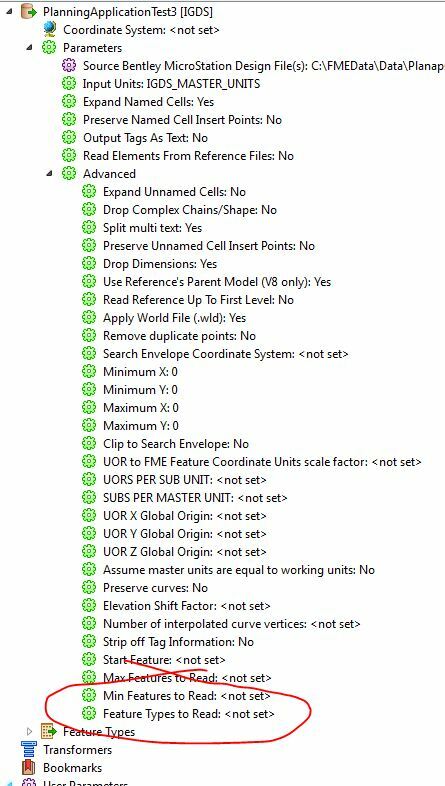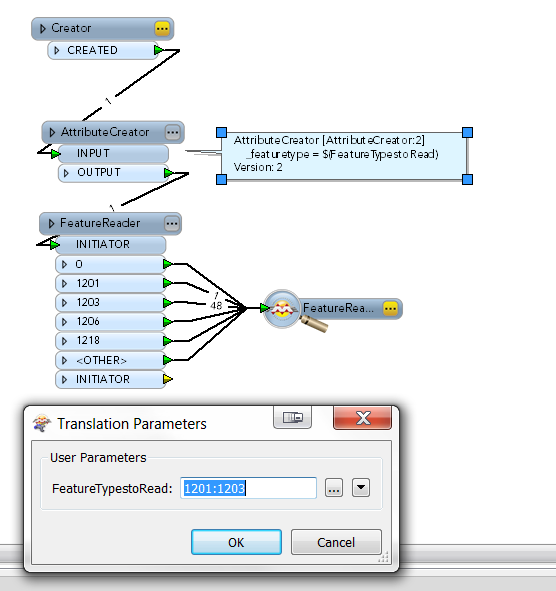When I need to do this on a group of files, I can pretty easily write a shell script to launch the workspace with a different input and output dataset for each of the input files.
However, I am now trying to extend this method to iterate over the feature types (in this case, Microstation .dgn levels) within a single file. I can't seem to figure out a way to implement this, though.
I need to publish a parameter that controls which level is processed. However, I can't seem to do that. I can't create a reader for a single feature type and publish the parameter that picks which one (it is greyed out), and I can't read the whole file and filter it, because I can't seem to link the actual filter variables to a published parameter.
There is probably a way to do this, probably not even using shell scripts, but I can't figure out what it is. Any ideas?












